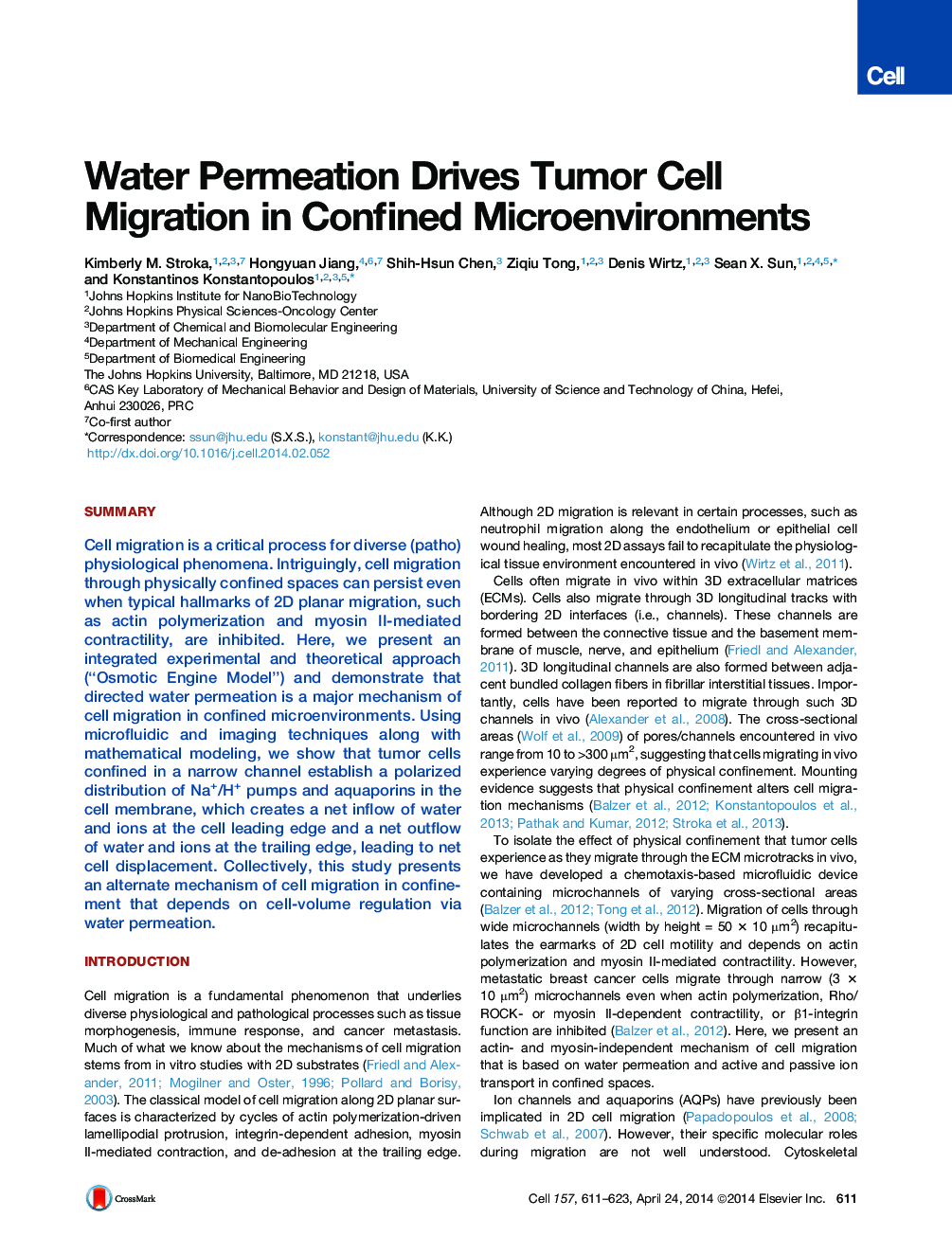| Article ID | Journal | Published Year | Pages | File Type |
|---|---|---|---|---|
| 2035538 | Cell | 2014 | 13 Pages |
•Modeling and imaging reveal osmotic mechanism for actin-independent migration•In confined spaces, the distribution of Na+/H+ pumps and aquaporins is polarized•Osmotic shocks influence cell migration speed and direction•Water permeation regulates cell volume and drives migration in narrow channels
SummaryCell migration is a critical process for diverse (patho)physiological phenomena. Intriguingly, cell migration through physically confined spaces can persist even when typical hallmarks of 2D planar migration, such as actin polymerization and myosin II-mediated contractility, are inhibited. Here, we present an integrated experimental and theoretical approach (“Osmotic Engine Model”) and demonstrate that directed water permeation is a major mechanism of cell migration in confined microenvironments. Using microfluidic and imaging techniques along with mathematical modeling, we show that tumor cells confined in a narrow channel establish a polarized distribution of Na+/H+ pumps and aquaporins in the cell membrane, which creates a net inflow of water and ions at the cell leading edge and a net outflow of water and ions at the trailing edge, leading to net cell displacement. Collectively, this study presents an alternate mechanism of cell migration in confinement that depends on cell-volume regulation via water permeation.PaperFlick To view the video inline, enable JavaScript on your browser. However, you can download and view the video by clicking on the icon belowHelp with MP4 filesOptionsDownload video (46974 K)
Graphical AbstractFigure optionsDownload full-size imageDownload high-quality image (152 K)Download as PowerPoint slide
